Scotland is renowned worldwide as being a place of outstanding natural beauty. We owe that reputation to the diverse range of Scotland’s biodiversity – plants, animals, and habitats. Scotland’s nature can, and does, inspire our people. We owe our own well-being to our biodiversity and it’s vital that we all play our part in safeguarding it and reducing the threats facing it.
Key messages
Plants and animals are important to our environment
The 2020 Challenge for Scotland's Biodiversity highlights the duty to protect the plants and animals that make up our valuable biodiversity and because of the benefits the environment gives us such as:
- Contributing over £21.5 billion to the Scottish economy.
- Insect pollination services in Scotland valued at £43m per year.
Recording observations
Biological recording is the study of the distribution of living organisms. Biological records describe the presence, abundance, and changes in animal and plant species.
Biological recording is the first part in the journey of an important piece of information. That information can give us vital understanding about different species in various locations. If we can see that a species has declined over time, we know that action needs to be considered to help conserve and protect it.
How are biological records used?
Data on plant and animal species is essential for helping policy and decision makers make good decisions relating to the environment. Species records are important to inform:
Planning assessments:
Land use:
- Farmlands and forests need more wild corners and less intensively managed margins to make space for once common birds, plants and insects. Scottish Government agri-environment and climate scheme supports appropriate management for vulnerable and iconic species and habitats, strengthening ecological networks, controlling invasive non-native species and enhancing the condition of protected nature sites
Ecosystems services:
- Understanding the value of nature to our own wellbeing as an asset to Scotland, informing decisions on how to manage it, invest in it, and to sustain the healthy ecosystems supporting it.
Invasive non-native species:
- Harmful non-native species need to be controlled to manage their impacts on biodiversity and other economic interests. Wildlife management is an important aspect of managing for biodiversity in the wider countryside as is controlling on invasive non-native species.
Learning and discovery:
- Learning about Scottish wildlife as part of the ‘Learning for Sustainability’ strand of the curriculum for excellence.
- Find out about the wildlife in your local area.
Who helps to collect data
Enthusiasts who care about nature collect wildlife data on a daily basis. Much of this is undertaken by volunteers who may belong to local natural history societies, wildlife recording schemes and local environmental records centres. Some specific types of data are also collected by government agencies, researchers and students. Many of these organisations belong to the National Biodiversity Network (NBN).
Biological data collected and shared openly by the NBN are critical to informed decision-making about nature and the environment.
NBN Atlas Scotland

The NBN Atlas Scotland is a free online we portal that educates and informs people about Scotland’s natural world. It helps to improve biodiversity knowledge, opens up research possibilities and is changing the way environmental management is carried out in Scotland and beyond.
The NBN Atlas Scotland’s innovative approach combines multiple sources of information about species and habitats, with the ability to interrogate, combine, and analyse these data in a single location. It aims to facilitate learning about and understanding of wildlife.
NBN Atlas Scotland allows users to view species records together with other environmental information such as habitat information and geographical boundaries and to download and export maps and reports or summaries for your own use.
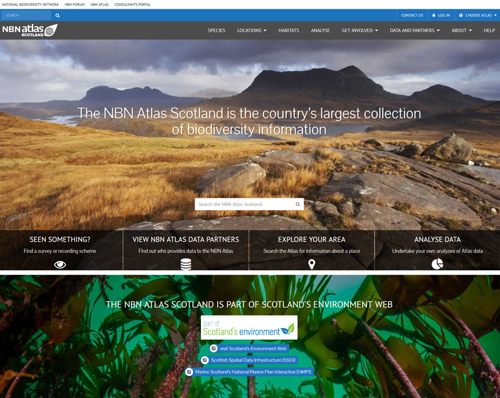
Help on how to use NBN Atlas Scotland.
Data
There are lots of different ways to search, view and analyse data on NBN Atlas Scotland including:
Search for species records of observations in Scotland by:
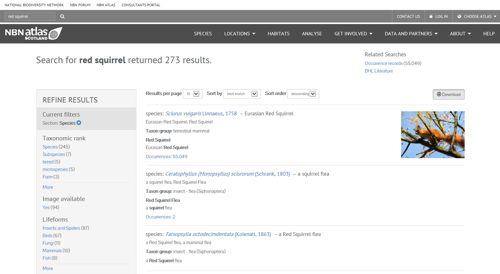
or
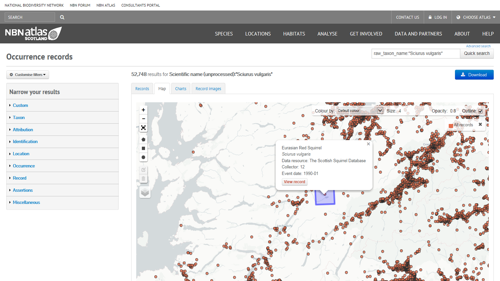
Explore habitats
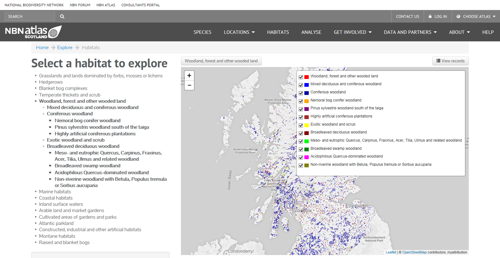
Spatial analysis of the relationships between species distributions and other factors.
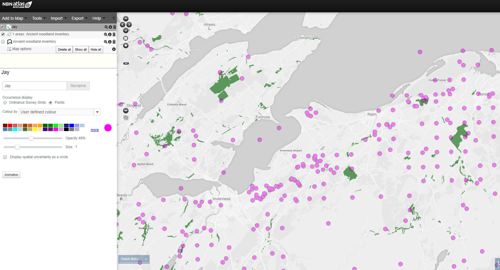
Get involved
Across Scotland and the UK there are many surveys taking place which relate to particular species. Some of these are high profile monitoring schemes such as the RSPB’s Big Garden Birdwatch, but others relate to lesser known species. Whatever the survey relates to people are often encouraged to send their wildlife sightings to them.
Get involved and help to collect data.
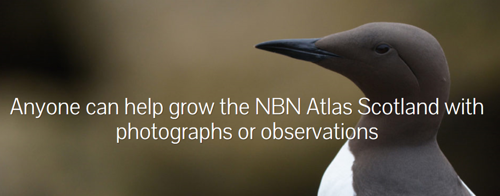
Data partners
The NBN Atlas Scotland would not exist without its data partners and they are all promoted on the website. These data partner pages can help to link up groups who are working on similar projects, or help enthusiastic amateur biological recorders find local groups or recording schemes in their area.
The way records on the NBN Atlas Scotland can be used is determined by the licence applied by the data partner. Some records are completely open for use; others are for non-commercial use only, but all can be viewed without restriction, except for sensitive species.
This means that high quality data can be shared, analysed and used for research and other purposes and the NBN Atlas provides an evidence base for environmental decision making.
Find out who provides data to NBN atlas Scotland.
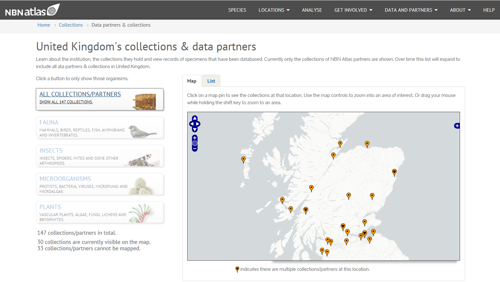
This page was reviewed on 02 Oct 2019
Adobe Acrobat Reader is the free, trusted leader for reliably viewing, annotating and signing PDFs.
Download Adobe Acrobat Reader








